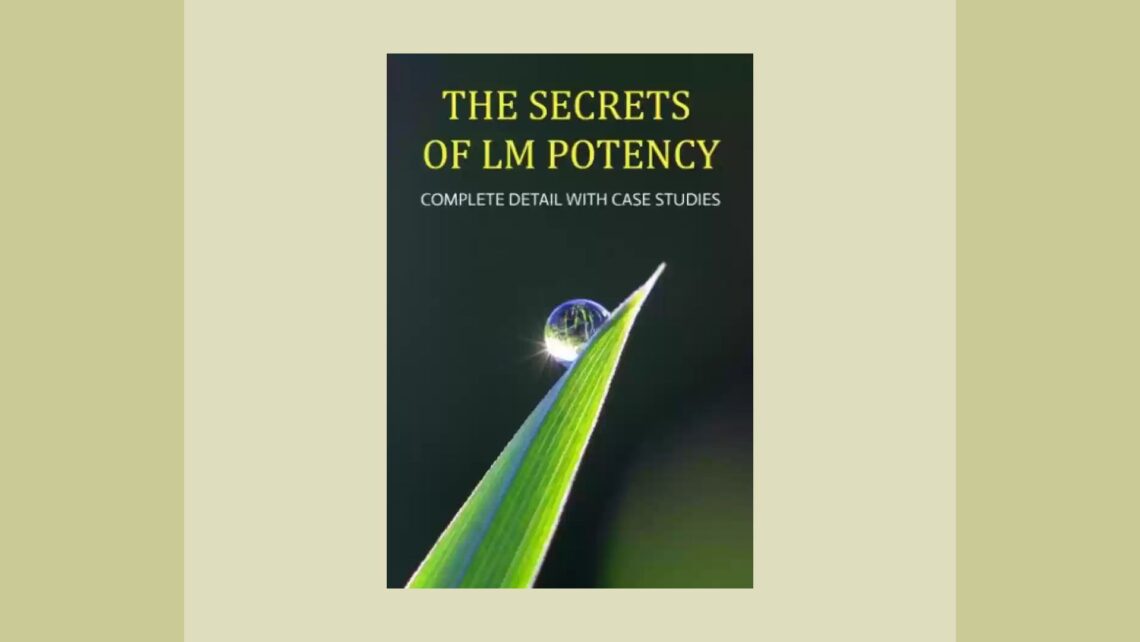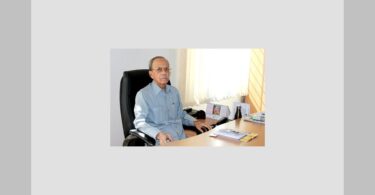Abstract: Introduced into practice a long time ago, LM-potencies however remain quite infrequently used in everyday homeopathic work due to the cumbersome mode of application, lack of knowledge concerning their indications and of the advantages over other potency scales.
This article covers 5 clinical cases (plexus brachialis injury with muscular emaciation, autism with mental retardation elements and aggressive behavior, hypothyroid state, panic attacks, arterial hypertension with long intake of allopathic drugs significantly ameliorated by LM-potencies, when centesimal scale appeared ineffective.
These clinical experiences with a variety of cases from structural to mental prove the serious curative potential of the LM-scale. LM’s can expand the scope of homeopathy’s potential and it needs wider clinical use, further studies and more sharing of experiences.
Keywords: homeopathy, individualized treatment, LM-potencies, plexus brachialis injury, autism, hypothyroid, panic attacks, arterial hypertension, drug disease
Introduction
The history of LM (or, more correctly, Q) potencies is very interesting, but full of mysteries, misunderstanding, prejudices, forgotten, lost and found items [1]. We clearly know that Hahnemann during his last 6-7 years used LM-scale more than centesimal potencies, because he considered the former safe and unlikely to aggravate, suitable for altered susceptibility and vital force.
Regrettably, all Hahnemann’s last years’ journals and experiences, as well as philosophy and methodology of LM-scale use were not known (or probably ignored) by the followers for nearly 100 years. In the early 1940s, Swiss physician Dr Rudolf Flury (1903–1977) rediscovered LM-potencies and made this scale and methodology known to the homeopathic profession [1].
However, the homeopathic community did not accept the “new” scale and methodology readily, and many controversies arose in respect of the usage method of these potencies, of going up the scale, of assessing vital force reactions, of preparation mode, etc.
According to inquiries on using various potency scales (2013) [1], 41.5% of prescriptions are of the centesimal scale, 20.2% — of both C and LM scales, 17.9% — of X, C and LM potencies, 9.4% — X potencies, and only 11.1% are LM-scale.
In this connection, it’s expedient to mention a brilliant book by Fernando Flores Villalva [2], with a description of diverse experiences in using the LM-scale for various diseases, in various usage methods.
The questions that arise in everyday practice:
* Are these LM-potencies so “potent” to be used as widely as Hahnemann did?
* What are the advantages of this scale over the others?
* Can we say that LM-potencies disclose and demonstrate the real potential of homeopathy?
CASE 1
Patient M, male, 40 years. Injury to left plexus brachialis, suspected left periarthritis humeroscapularis.
For enlarged and painful cervical lymphatic nodes, the patient was subjected to excision biopsy. Shortly after the procedure, the patient experienced pain in his left shoulder joint on motion. MRI: Left periarthritis humeroscapularis, initial stage, suspected arthrosis of left acromioclavicular joint.
In 2 weeks after the pain started, the observation discovered lower volume and subsequently marked emaciation of shoulder girdle muscles and those above scapula. Other symptoms were coldness sensation, sensitivity to cold in the area above scapula and of shoulder girdle. Pain in left shoulder joint on motion remained, but the other pain appeared, aggravated by beginning of motion and ameliorated by continued motion.
The repertorization: (Complete Repertory from completedynamics.com):
Generalities; emaciation; parts; affected
Extremities; pain; shoulders; motion; agg.; arm, of
Generalities; coldness, lack of vital heat; parts; affected
Generalities; pain; motion; agg.; beginning to
Generalities; pain; motion; amel.; continued
Results: Caust, Puls
Causticum 30C 3 times daily over 10 days resulted in minor amelioration of pains, but no change in other symptoms. Increased repetition of Causticum 30C (4 times daily over 2 weeks) gave no change vs. the previous period. Causticum 200C demonstrated short improvement followed by the pain increase.
On Causticum LM4 2 times daily: the pains disappeared completely within a week, with better sensitivity to cold and some increased volume of the muscles. With Causticum LM5 and LM6, the muscular volume restored completely during a month, and sensitivity to cold became normal.
Inference: For subacute conditions, even with marked structural changes, the LM-scale is preferrable vs. the centesimal one. If susceptibility permits, shifting from C30 to at least LM4 makes more sense, than going from LM1 up, as LM1 is lower than C30.
CASE 2
Patient V, male, 10 years old. Autism, with mental retardation elements, aggressive behavior.
Since 4 years of age received homeopathic treatment. Initially, there was inability to understand speech, speech was absent up to 5 years. Stereotypic movements (waving hands, turning head, spinning). Necessity of a certain order (places objects specifically, gets discontented if changes in a day schedule or in habitual route).
Concentration poor (less than 15 minutes). No communication with other kids and adults (paying nearly no attention). Inconstant concordant emotional reactions (laughs when others laugh, if someone near weeps — no reaction). Constantly on the move, no rest. Poorly developed toilet habits (needs diapers for involuntary stool and urination). Aggressive behavior (hits others) only in response to restrictions, contradictions or towards other kids who fail to understand him.
Over 6 years on homeopathic remedies (Mercurius solubilis 200, 1M; Tuberculinum 200, 1M; Natrum muriaticum 200, 1M; Calcium phosphoricum 200, 1M; Agaricus 200, 1M; Phosphorus 200, 1M; Calcium iodatum 200, 1M; Anacardium 200, 1M; Tarentula 200, 1M; Causticum 200, 1M) there was significant improvement in understanding speech (understands about 90%), toilet habits are normal, better concentration, gets interested in other people, concordant emotional reactions prevail.
Symptoms are fluctuating (once better, than slightly worse). Persisting complaints are repeated “ritualistic” behavior, strict attachment to order, aggressive actions without apparent cause (sometimes as discontentment manifestation, reaction to contradiction or to some rules violation). Mental retardation is also present, but its degree is lower. Limited understanding of social context, adequacy and appropriateness to the circumstances.
Current repertorization (Complete Repertory from Completedynamics.com):
Combined rubrics [Mind; compulsive disorders; ritualistic, Mind; repeats same things]
Mind; imbecility
Mind; anger; sudden, paroxysmal
Results: Tub, Zincum
According to previous prescriptions, there was no progress on Tuberculinum 1M, so Tuberculinum LM5 was given 2 times daily. Over 2 months: better speech understanding, stimulated speech development (speaks small phrases and sentences, new words), no aggressive outbreaks (however, sharp changes of emotional state), better adapted to unusual situations, ritualistic behaviors are less frequent and result mostly from intellectual difficulties.
Tuberculinum LM6 2 times daily — during 4 months: more initiative, even asks for haircut, appropriately enters conversations, considerably more adequate to the circumstances, nearly complete understanding of speech, spontaneous speech continues to improve, nearly absent of ritualistic behaviors, aggressive actions are very rare (even to restrictions and contradictions).
Inference: Even in cases of deep mental disturbances, the LM-scale acts considerably deeper and longer than the centesimal potencies. It is expedient start from LM5 onwards.
CASE 3
Patient L, female, 39 years. Hypothyroid state.
On homeopathic treatment during 2 years for skin eruptions on palms (painful cracks, itching) and constipation (urging was absent for 5-6 days, with incomplete stool sensation, ineffectual urging, hard stool). After Petroleum 30 then LM4: regular stool (daily or on alternate days), no skin eruptions over a year.
In June 2021 she experienced COVID-19 (recovery took 10 days on Natrum muriaticum 30 then 200), slight weakness remained over 2 weeks. Due to intense work load, the patient complained of weakness with irritability and anxiety (“this COVID-19 reappeared, there could be damage to my internal organs”), more constipation (up to 4-5 days no urging, stool completely hard). Blood test showed TSH 7.73, T4 0.903.
Current rubrics (Complete Repertory from Completedynamics.com):
Mind; irritability; weakness; with
Mind; anxiety; weakness, with
Hypothyroid (combined rubrics taken from lectures by Ajit Kulkarni)
Combined rubrics [‘Rectum; constipation; stool; remains long in rectum with; urging, no’, ‘Rectum; constipation; stool; remains long in rectum with’, ‘Rectum; constipation; urging; absent’]
Results: calc, nat-m, sil, thuj
Natrum muriaticum 30 then LM4 gave no effect; Calcium carbonicum LM4 resulted in better stool, but increased weakness and anxiety. So, prescription was Silicea LM5 2 times daily: over 10 days the stool appeared once per 3 days, weakness is considerably less. Silicea LM8 for 10 days: weakness is very mild, stool daily or on alternate days. Silicea LM12: no weakness, stool daily or on alternate days.
Inference: For chronic states, LM-scale is preferable over centesimal ones. If susceptibility is not excessive, one can go up the scale in a manner LM5 — LM8 — LM12.
CASE 4
Patient I., male, 15 years old. Panic attacks.
Under homeopathic treatment since 7 years of age for frequent and long acute diseases (chronic nasal obstruction with discharges, sometimes abdominal pains with diarrhea, without high fever) and stammering (appeared at the age of 4-5 years after the parent’s divorce and increased in first school years, sometimes associated with involuntary movements — winking or blinking, motions of head, left shoulder and left upper limb).
On homeopathic medicines (Pulsatilla 30, 200, LM5; Calcium carbonicum LM4; Mercurius solubilis 30, LM4; Silicea 30, LM4): no tendency to frequent and long acutes (2-3 acute episodes lasting 5-7 days over a year), stammering decreased significantly, involuntary movements appear only with increased stammering on intense emotional exertion.
In 2016 he changed the school, and was badly treated by classmates (offending, bullying), so stammering intensified with considerably more involuntary movements (general trembling and movements of head, face twitching and jerking, general restlessness), experienced fainting spells from stuffy air, noise and crowded environment.
On homeopathic medicines (Cicuta 30, LM5; Agaricus 30, LM5; Tarentula 30, LM5; Argentum nitricum 30, LM5, LM7): no considerable changes, but all morbid manifestations appeared more clearly, better understandable to the patient and therefore more distinctly explained.
Involuntary movements involving mostly head and face, with general restlessness. There is definite fear of high places and inconstant fear of open spaces (church, subway, city squares). The patient managed to exactly formulate the sensations associated with involuntary movements and physical restlessness: “I’m afraid to lose control, go insane, do some weird actions, get out of control, fall down”.
The rubrics taken are (Complete Repertory from completedynamics.com):
Mind; fear; self-control, losing
Head; motions; of; involuntary
Mind; fear; high places
Results: Gels, Merc
Gelsemium LM6 prescribed for 2 weeks: less fears of high places and of losing control (with less involuntary movements and restlessness). Gelsemium LM12: fear of high places and of losing control decreased considerably, with less restlessness (nearly a half of what it was before the remedy.
Inference: Even for intense mental symptoms, LM-potencies are preferable. Considerable changes in marked mental manifestations can be expected from potencies over LM8-10.
CASE 5
Patient F., female, 67 years old. Arterial hypertension, epicondylitis of right elbow joint.
Took homeopathic medicines for over 5 years for arterial hypertension poorly controlled by allopathic hypotensive drugs (increased BP to 200/100, with chilliness, “stupefying dullness” sensation, heaviness in occiput), irregular heart rhythm (extrasystoles).
On homeopathic remedies (Natrum muriaticum 30, LM5, LM7; Gelsemium 30, LM5; Lachesis 30, LM5) systematic intake of allopathic drugs is discontinued (half-dose remains only for drastic increase of blood pressure), no arrhythmia over 2 years.
After conflicts in the family, the higher blood pressure went to relapsed to 170/100 (heaviness and congestion in head), with further return of systematic allopathic drugging. In a week, with no apparent cause, the patient was also disturbed by pain in right elbow on motions.
Rubrics are as follows (Complete Repertory from completedynamics.com):
Combined rubric [‘Extremities; pain; elbows; bones; condyles, around, tennis elbows’, ‘Extremities; inflammation; elbows; condyles, around, tennis elbows’]
Drug disease (a newly developed rubric which logic was thoroughly explained in the article [4])
Clinical; hypertension
Results: Agar, Calc, Chin-S, Plb, Rhus-T, Sil, Sulph
Plumbum metallicum LM4 2 times daily for 10 days: pain much better in right elbow joint, BP stabilized at 150/90 on half the dose of allopathic drugs. During the following month: right elbow joint pain did not recur, BP about 140-150/80-90 without allopathic medicaments, episodes of increased blood pressure to 160/95 are easily coped with by additional doses of Plumbum metallicum LM4.
Inference: Even marked drug disease manifestations subside by action of LM-potencies. Allopathic medications should be tapered very gradually, considering possible increase in LM-scale and the homeopathic remedy dosages, with respect to the patient’s susceptibility and clinical manifestations.
Conclusion
The answer to the question: “Are these LM-potencies so “potent” to be used as widely as Hahnemann did?” is “yes”. In the case with structural changes, resistant to the centesimal potencies, we saw significant improvement and complete recovery of the deficient anatomical structures.
The case with marked mental symptoms of a chronic type also demonstrated notable progress with the LM-scale, when the increase in centesimal potencies gave no effect or even induced some aggravation.
For chronic cases with functional problems, LM-potencies appeared more effective than the centesimal scale, acting gently but successfully. Sometimes inability to see prompt effects of LM-scale is due to inadequate tailoring of specific potency to the case individuality.
Very promising are LM-scale action in the cases with so-called “drug disease”, when the patients are on various and multiple systemic allopathic medications for years. This is of great importance, considering the wide spread abuse of allopathic medications nowadays.
Advantages of the LM-scale are clear to the unprejudiced observer with wide clinical experience. More work is required to make these potencies familiar for everyday use, and to remove anxiety and insecurity about using this scale in a variety of clinical situations.
Combining application of LM-potencies with better understanding of the miasmatic process, improved case taking skills and more clinical experience can bring homeopathy to another level, demonstrating and disclosing the real potential of this medical art.
References
- Robert Jütte. LM potencies in homoeopathy: From their beginnings to the present day. English edition: Prof. Dr. Robert Jütte, Institut für Geschichte der Medizin der Robert Bosch Stiftung, Straussweg 17, D-70184 Stuttgart.
- Fernando Flores Villalva. LM scale: 50 Millesimal Potencies. First English Edition: 2005. B. Jain Publishers.
- Complete Dynamics software program (completedynamics.com)
- Alexander V. Martiushev “Latent psora: a practical approach” https://hpathy.com/homeopathy-papers/latent-psora-a-practical-approach/






Thanks a lot for excellent article , it allows to raise minds and look at LM- scale from another perspective side.
Great article. Nice learning
Dear Dr. Alexander V. Martiushev,
Thank you for this article on the wonderful LM potencies. I wish more homeopaths knew how to use them. They seem to work more deeply and also more gently at the same time. As a patient, I find the LM’s incredibly powerful.
It’s difficult to find a homeopath who not only works with LM’s, but can also pick the appropriate remedy and know how to dose properly.
I have to be careful with them though. I have a sensitive system and they can aggravate badly, just like the C potencies, if I’m not careful.
what is the exact way to use LM potencies?
According to experience of F. F. Villalva, LM-potencies can be used in dry and in liquid form. I used them in the same way.
Dear Kathy,
LM-scale was designed by Hahnemann especially for oversensitivity and low vitality, so with this one can apply intermediate glasses, changed dynamisation, or even repertory rubric Oversensitive remedies.
Уважаемый д-р Александр В. Мартюшев.
Thank you for sharing your knowledge. If you don’t mind I’d like to ask a question. My son has ASD, “Cuprum met. ” personality fits him at present time ~ 90%, after taking one dose of Cuprum 30C there were some reactions: skin rash on hands and the “cold symptoms” for one day. In 6 weeks Curpum 200C one dose: very intense skin rash on the hands and 2 days of “cold”. In 2 mo. Cuprum LM1 daily: intense rash on hands on the 10th day. I’d like to try LM5 or higher potency next time. If there is a response such as the skin rashers as an aggregation, do you gradually go up or still you may skip the next potency? Thank you.